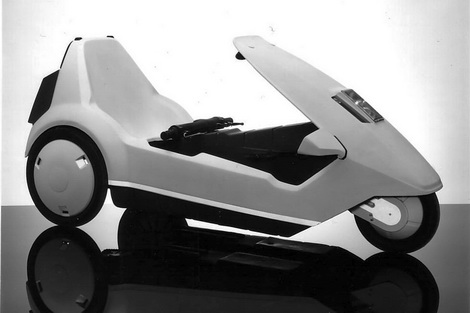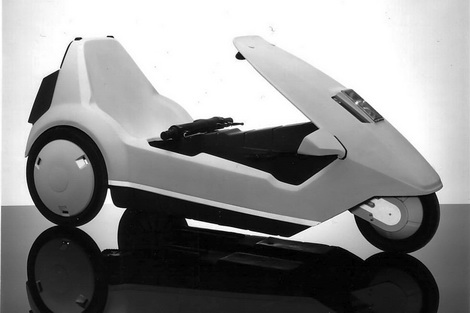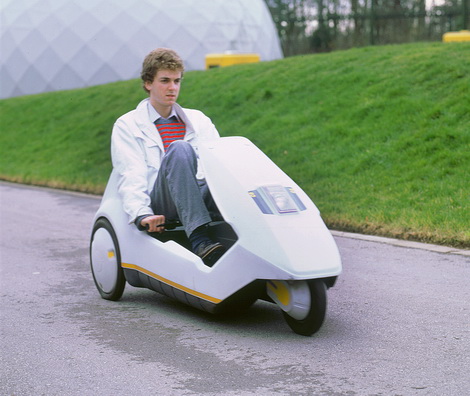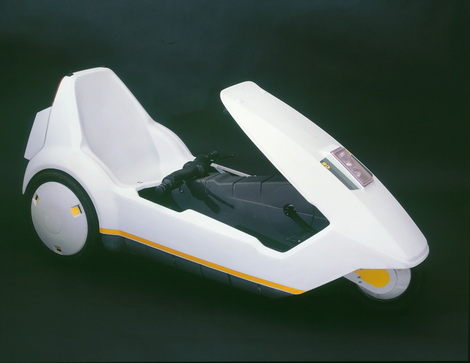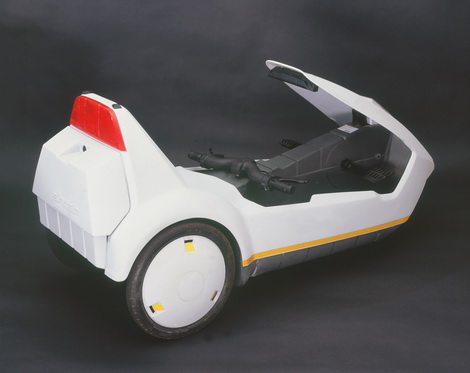It will forever be remembered as an unmitigated disaster - up there with Betamax and the Minidisc - though was in fact voted the greatest innovation disaster of all time last year by 1,000 tech fans; was the Sinclair C5 really just ahead of its time?
Celebrating its 30th anniversary this year with a special display at the National Motor Museum in Hampshire, UK, the C5 is a single-seat, pedal-electric, urban commuting vehicle not a million miles away from the concept of the Renault Twizy or Toyota i-Road. While not a exactly common sight on the road (the i-Road is only on test in Grenoble), cars such as this could have been the norm had the Sinclair C5 caught on.
Conceived by inventor and innovator Sir Clive Sinclair - the man who brought pocket calculators, home computers and pocket TVs to the masses - the Sinclair C5 was designed to be an inexpensive and nimble alternative to travelling by car, bus or bicycle for one person.
Powered by a 250-watt lead-acid battery (Sinclair preferring to leave battery tech to the battery manufacturers) and a restricted top speed of 24km/h the C5 could be driven without a licence, by anyone over the age of 14. Purchased through mail order catalogues (ask your parents what that means) the C5 was fairly basic with 'niceties' such as indicators, mirrors, mud flaps, a horn and a "High-Vis Mast" designed to make the C5 more visible in traffic all offered as options.
The C5 needed to be more visible: at just 2ft 7ins in height, it was shorter than a truck tyre and the seating position put the occupant's face directly in-line with the exhaust pipes of cars running leaded fuel.
But aside from the vulnerability - to both other traffic and the elements (a protective poncho was available) - the C5 received positive reviews for its handling and ease of use, with one reviewer saying it was "very easy to master once you have become familiar with the under-thigh handlebar steering and the semi-recumbent driving position with feet on bicycle-type pedals."
The handling 'prowess' can be attributed to the involvement of engineers from Lotus, who were called in to fine tune the detailing and provide both the gearbox and rear axle - and the low weight. Made predominantly of polypropylene, the C5 tipped the scales at just 45kg - handy considering there was no reverse gear and drivers had to pick up the front end of the tricycle and turn it around by hand.
Unfortunately, a number of decisions made early on in the C5's life meant it faced an uphill struggle. With no experience of building cars (or pedal-powered electric tricycles), Sinclair Research sub-contracted production of the vehicle to The Hoover Company in Wales, leading to the urban myth that the Sinclair C5 was powered by a washing machine motor.
The choice of London's Alexandra Palace (one of the hilliest parts of London) as the location for the C5's launch did Sir Clive's personal project no favours. The batteries were quickly depleted in the test cars driven by motoring and technology journalists, meaning they had to use pedal power to get back to base. Even Sir Stirling Moss, on hand to give the C5 some credence, struggled with it and Canada's Globe and Mail newspaper reported: "On a cold and foggy London day, the great man was visibly sweating."
The C5's biggest problem however was Clive Sinclair. He believed that the world needed the C5, but never bothered asking the world if it did; no research was done to establish the existence of a market for such a vehicle. Sinclair sold a stake in the company that made his fortune to pump £8.3 million (and that's £8.3 million in 1980 money) into the project and was told by the man he hired to head up Sinclair Vehicles, the engineering firm who worked on the C5 and the designer brought in to finalise the styling that the project would not work - but Sinclair pushed on regardless.
But that was all 30 years ago. Were the Sinclair C5 to arrive today we suspect it would prove more successful. For a start it was dirt cheap; even accounting for inflation it would probably cost no more than a scooter or small motorbike. Then there is the fact that it costs nothing to run: cycle, recharge the battery, deplete the battery, cycle. Factor in advancements in battery technology over the past 30 years and you have an urban commuter that can nip in and out of traffic, at speeds of up to 45km/h and can cover 50 kilometres on a full battery. Wait; is the Toyota i-Road the long lost child of the Sinclair C5?

